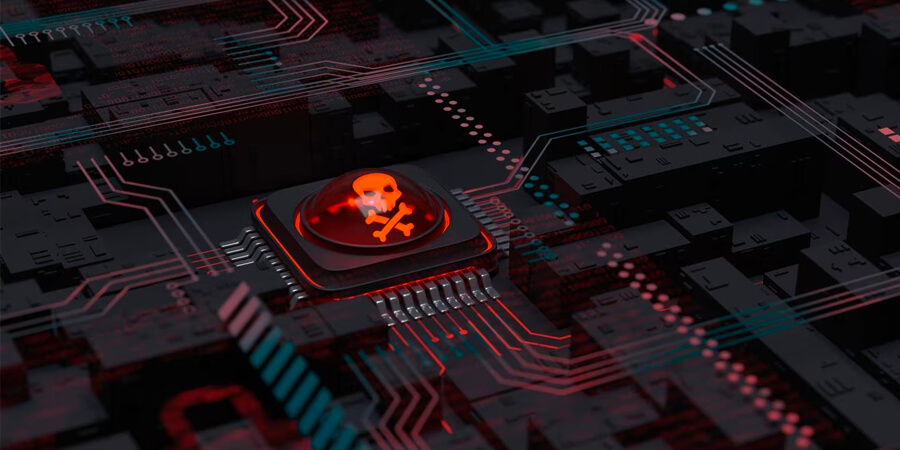The increase in data connectivity and improvements in technology in the modern world did not only lead to better efficiency in operating things and productivity in day-to-day life, but it also made organizations fall victim to malicious threats and cyberattacks. The Veeam® 2023 Ransomware Trends Report displays worrisome numbers, emphasizing the critical need for better security against these attacks.
According to the Veeam® 2023 Ransomware Trends Report, a ransomware attack will compromise more than 80% of the data in one in every seven organizations, indicating a huge gap in protection. Veeam Software, a leader in data protection and ransomware recovery, discovered that during cyber-attacks, attackers almost always (93%+) target backups and are successful in crippling their victims' ability to recover in 75% of those events, reinforcing the importance of immutability and air gapping to ensure backup repositories are protected.
“The report shows that today it’s not about IF your organization will be the target of a cyber-attack, but how often. Although security and prevention remain important, it’s critical that every organization focuses on how rapidly they can recover by making their organization more resilient,” said Danny Allan, CTO at Veeam. “We need to focus on effective ransomware preparedness by focusing on the basics, including strong security measures, and testing both original data and backups, ensuring survivability of the backup solutions, and ensuring alignment across the backup and cyber teams for a unified stance.”
A Persistent Threat
As stated in the “State of Ransomware 2023” report by cybersecurity firm Sophos, cyberattacks in Asia Pacific decreased somewhat in 2022, with 68% of firms surveyed reporting being victims of ransomware, down from 72% the previous year. In this year's analysis, Singapore had the highest rate of ransomware attacks, with 84% of firms being struck in 2022.
According to survey respondents, the most prevalent root cause of ransomware outbreaks is an exploited vulnerability (36%), followed by compromised credentials (29%). The widespread utilization of technology, expanding digital infrastructure, and economic interdependence have provided fertile ground for hackers to attack.
Cyberattacks have serious consequences for organizations and individuals throughout Asia Pacific. Aside from financial losses, firms frequently face severe operational disruptions, brand damage, and possibly legal and regulatory ramifications as a result of ransom payments. Personal information compromise can lead to identity theft, financial fraud, and other forms of cybercrime for individuals.
According to the Veeam® 2023 Ransomware Trends, during 93% of cyber-attacks, attackers primarily target backups. Disturbingly, in 75% of these attacks, they are successful in incapacitating victims' abilities to recover. This highlights the critical requirement for enterprises to emphasize immutability and air-gapping measures in order to preserve backup repositories.
Addressing the Ransomware Crisis
Following a ransomware attack, businesses must make a critical decision: pay the ransom or restore from backups. Attackers remove the option of recovery by attacking the backup solution, effectively forcing the victim to pay the ransom. While recommended practices — like safeguarding backup credentials, automating cyber detection scans of backups and auto-verifying that backups are restorable — are helpful in mitigating assaults, the most important strategy is to ensure that backup repositories cannot be deleted or damaged. Organizations must focus on immutability to achieve this. The good news is that 82% of firms use immutable clouds, 64% use immutable disks, and only 2% do not have immutability in at least one tier of their backup system, based on lessons learned from victims.
Businesses must prioritize cybersecurity by investing in advanced threat detection systems, frequent software updates, and employee training programs. Multi-factor authentication, encryption, and strict access controls can all help reduce the danger of ransomware attacks.
According to the State of Ransomware 2023 report by Sophos, regardless of how you look at it, using backups to recover from a ransomware attack is far less expensive than paying the ransom. The median cost of recovery for those who used backups ($375,000) is half that of those who paid the ransom ($750,000). Similarly, those who used backups had a nearly $1 million lower average recovery cost. This is sufficient proof of the financial value of investing in a solid backup strategy.
Meanwhile, governments, regulatory bodies and law enforcement agencies must partner with the corporate sector to exchange threat intelligence, build cybersecurity frameworks and develop effective incident response plans to battle ransomware attacks collectively.





